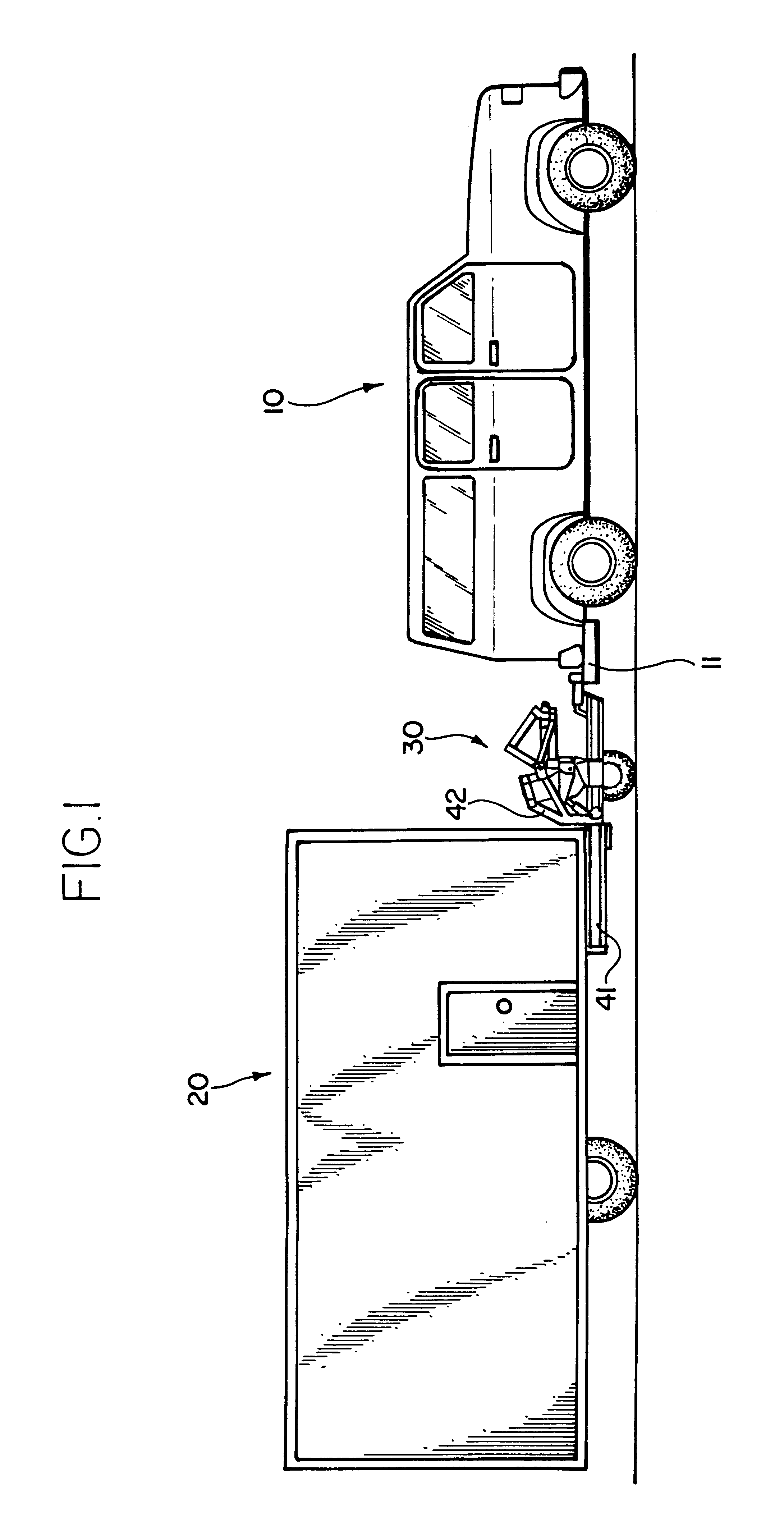Trailer hitch assembly
a technology for trailers and assemblies, applied in tractor-trailer combinations, vehicle components, towed devices, etc., can solve the problems of not being desirable, unable to absorb some additional load, and springs pushed up harder and absorbing some additional load
- Summary
- Abstract
- Description
- Claims
- Application Information
AI Technical Summary
Benefits of technology
Problems solved by technology
Method used
Image
Examples
Embodiment Construction
FIG. 1 depicts a towing vehicle 10 attached to a trailer 20 which is equipped with a towing apparatus 30 in accordance with the present invention.
FIGS. 2 & 3 illustrate the major components of towing apparatus 30. The main structural element of towing apparatus 30 is a trailer frame 40 which has a rear frame portion 41 comprising rear beams 43a, 43b, 43c, and 43d which are adapted to be mounted to the bottom of trailer 20 (FIG. 1) by bolts, welding or the like. Projecting outwardly from trailer frame 40 (i.e., in the direction of towing vehicle 10), is a frontwardly-extending trailer frame portion 42 which is integral with trailer frame 40.
Extending from the center of trailer frame portion 42 is a box-like main frame assembly 50; similarly, a pair of secondary-spring-supporting frame members 60a, 60b extend outwardly from each side of frame portion 42 (FIG. 3). Main frame assembly 50 and supporting frame members 60a, 60b are integral with trailer front frame portion 42.
Main frame as...
PUM
 Login to View More
Login to View More Abstract
Description
Claims
Application Information
 Login to View More
Login to View More - R&D
- Intellectual Property
- Life Sciences
- Materials
- Tech Scout
- Unparalleled Data Quality
- Higher Quality Content
- 60% Fewer Hallucinations
Browse by: Latest US Patents, China's latest patents, Technical Efficacy Thesaurus, Application Domain, Technology Topic, Popular Technical Reports.
© 2025 PatSnap. All rights reserved.Legal|Privacy policy|Modern Slavery Act Transparency Statement|Sitemap|About US| Contact US: help@patsnap.com



